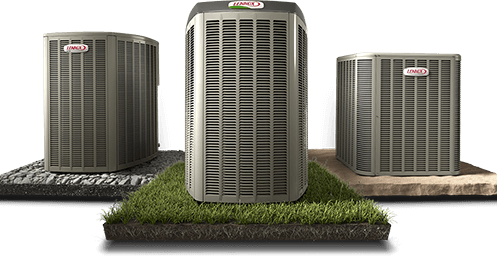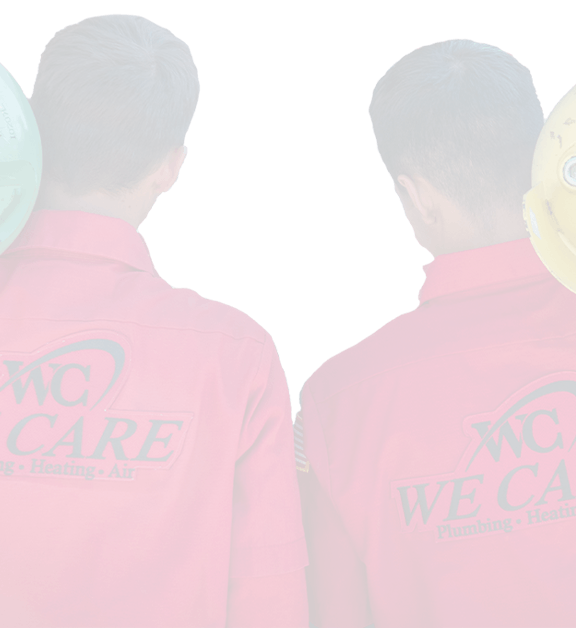Updated: April 2024
Your air conditioner works round the clock to ensure your home is crisp and comfortable. The AC unit is a complicated system with multiple mechanisms that facilitate temperature regulation. In this article, we’ll look at some of the essential parts of your air conditioner and its functions.
1. The Blower and Compressor
The blower is an essential component of your air conditioner that moves air to the interior. It circulates air through the ductwork to the room to be conditioned. There are different types of fans you’ll find in the blower compartment.
The type of fan manufacturers use for AC equipment depends on factors such as acceptable noise levels, desired pressure, and required volume. A propeller fan is the noisiest, but it is the most efficient for moving large volumes of air through a building. A radial fan is desirable where noise is going to be an issue.
There are also two types of blower motors: single-speed and variable-speed motors. Single-speed devices can only run at the same speed or switch off. Some brands prefer it for its stability and reliability, which the device can extend over a long period.
On the other hand, a variable-speed motor can adjust to the cooling needs of the interior. Its capacity can vary between 10% and 100%. As a result, temperature regulation in the interior is precise, which allows for considerable energy savings.
2. The Expansion Valve and the Refrigerant
The refrigerant is a fluid that facilitates the regulation of temperature by absorbing heat from its surroundings. It can go through phase transitions from liquid to gas as it gains or loses its pressure. At high pressures, it releases its energy and gains energy when it is depressurized.
The expansion valves control the refrigerant’s pressure. In the evaporator, it converts the refrigerant from liquid to gas. Fans blow air over the coils containing the coolant before it turns back to its liquid state.
One of the issues you may encounter with your AC is diminishing refrigerant levels. When the refrigerant is running low, your AC will struggle to cool your home. It may overwork to meet the needs of the interior.
A low refrigerant may also indicate there are leaks in your AC unit. Leakages can have adverse effects on indoor air quality. If your suspect your AC has such issues, contact an HVAC professional as soon as possible to avoid further complications.
3. The Evaporator and Condenser Coils
The condenser and evaporator coil have a similar design, but they perform distinct functions. They both work in tandem to regulate temperatures in your home, however. The evaporator absorbs heat from the interior and dispenses it to the exterior through the condenser coils.
Both the condenser and the evaporator have similar coils that are in loops to increase their surface area. The tubes are often copper, which is a good conductor of electricity and ambient heat.
One of the issues prevalent with evaporators and condensers is the buildup of debris on the copper tubes. Copper is susceptible to corrosion, so it is advisable to keep the tube’s surface clean to maintain its performance.
Dirt can also cause microbial growth, which can damage your components and may also be a hazard to your family. Refrigerants are usually hydrocarbons, which can be toxic if inhaled. You can also cause an accident if you try to repair the equipment without the requisite skill and experience.
That’s why at We Care Plumbing, Heating, & Air, we recommend scheduling a tune-up of your HVAC in Murrieta. A professional needs to inspect your AC at least once a year, preferably in spring. Cleaning components and repairing faults can prevent systemic issues later.
4. Thermostat Devices for Temperature Regulation
The thermostat is one of the devices that makes your AC convenient to use. Without it, there would be no way to maintain temperatures within a target value. In the past, the system would open the ducts to control temperatures. Fortunately, most systems nowadays are automatic and convenient to use.
There are two main types of thermostats you can find today: semi-automatic and programmable. Semi-automatic devices allow you to set the target temperature and make the necessary adjustments. Whenever the room is too hot, it will signal the compressor to start the cooling process.
Some modern central heating and cooling systems use outdoor sensors to boost the accuracy of the temperature reading. These devices work with other thermostat devices within the system to ensure precise heat regulations.
Programmable thermostats are similar to their semi-automatic counterparts but with more features. They enable users to schedule how and when the AC unit will cool the interior. Many programmable devices can learn from your pattern and adjust temperatures accordingly.
Smart thermostats are becoming increasingly popular for AC systems. They have Wi-Fi capabilities, and they can integrate with any other system. They can generate energy consumption reports, which you can access remotely through your device.
Smart thermostats allow for more effective management of your ACs performance and energy consumption. The reports can indicate when there is a problem with your equipment. High utility bills are often a sign of a failing air conditioning system.
5. The Filter for Indoor Air Quality
Your air conditioner’s air filter is a critical component that may seem like a simple mesh. For that reason, it is easy to overlook its significance in upholding your comfort in Riverside County. But it can have an impact on your equipment performance, longevity, and your home’s indoor air quality.
Filters can trap debris and contaminants circulating inside the building. Depending on the filter, it can capture microbial spores, hair strands, pollen, and different types of allergens. When there is clogging in your filter, it may impact airflow within the system.
You need to change or clean your filter once a month to prevent airflow issues. Blockages within your ductwork can overwork your air conditioner, and it may raise your utility bills in the process. It may also increase negative pressure, which will allow debris from crawlspaces to get into the interior.
Routine air duct cleaning is necessary to maintain indoor air quality and minimize the risk of system failure. Our certified professionals can detect and seal leaks within your ductwork. A professional cleaning can last up to seven years as long as it is done correctly.
If you suspect your indoor air quality is deteriorating, you may want to consult our comfort specialists. One of the signs of pollution in your home is if there are signs of dust on countertops, furniture, and floors.
Occupants of the building may also have physiological signs such as nausea, fatigue, and headaches. Some pollutants like VOCs and carbon monoxide can have severe health implications. You may install a detector to ensure that your home is free from hazards. A professional should inspect the sensors during the routine maintenance of your air conditioning system.
We Care Plumbing, Heating, & Air is the leading AC service provider in Murrieta. We have a comprehensive maintenance plan that includes a priority service. Our BBB A+ rated team can repair, install and troubleshoot virtually all brands and models of ACs. We provide indoor air quality solutions to restore your home’s safety and comfort. Contact our acclaimed team for unrivaled services in Murrieta.
Author Bio: Rusty Cochran
 Rusty Cochran is the President of We Care Plumbing, Heating and Air Conditioning. We Care began humbly, operating in his family’s living room. Under Rusty’s strong leadership, We Care has grown from 2 employees to over 200 employees. We Care Plumbing, Heating and Air has gained recognition across the HVAC industry, receiving numerous awards and certifications, including being named the ACCA Contractor of the Year, The Map Presidential Award several times, Angie’s List Super Service Award, NATE certification, and multiple Dave Lennox Awards. LinkedIn Profile
Rusty Cochran is the President of We Care Plumbing, Heating and Air Conditioning. We Care began humbly, operating in his family’s living room. Under Rusty’s strong leadership, We Care has grown from 2 employees to over 200 employees. We Care Plumbing, Heating and Air has gained recognition across the HVAC industry, receiving numerous awards and certifications, including being named the ACCA Contractor of the Year, The Map Presidential Award several times, Angie’s List Super Service Award, NATE certification, and multiple Dave Lennox Awards. LinkedIn Profile






